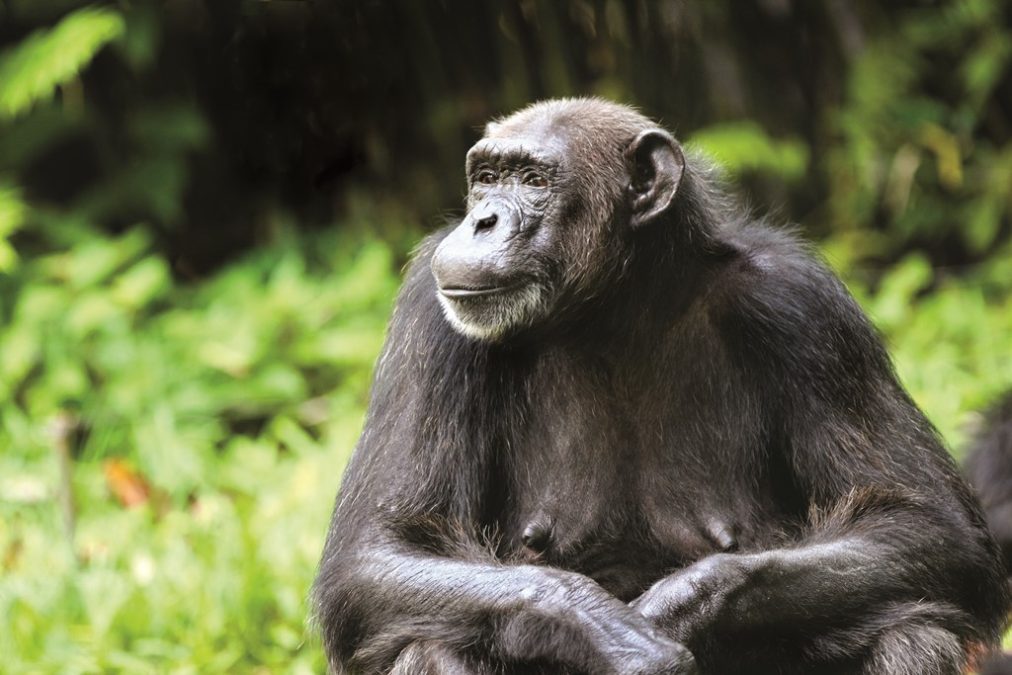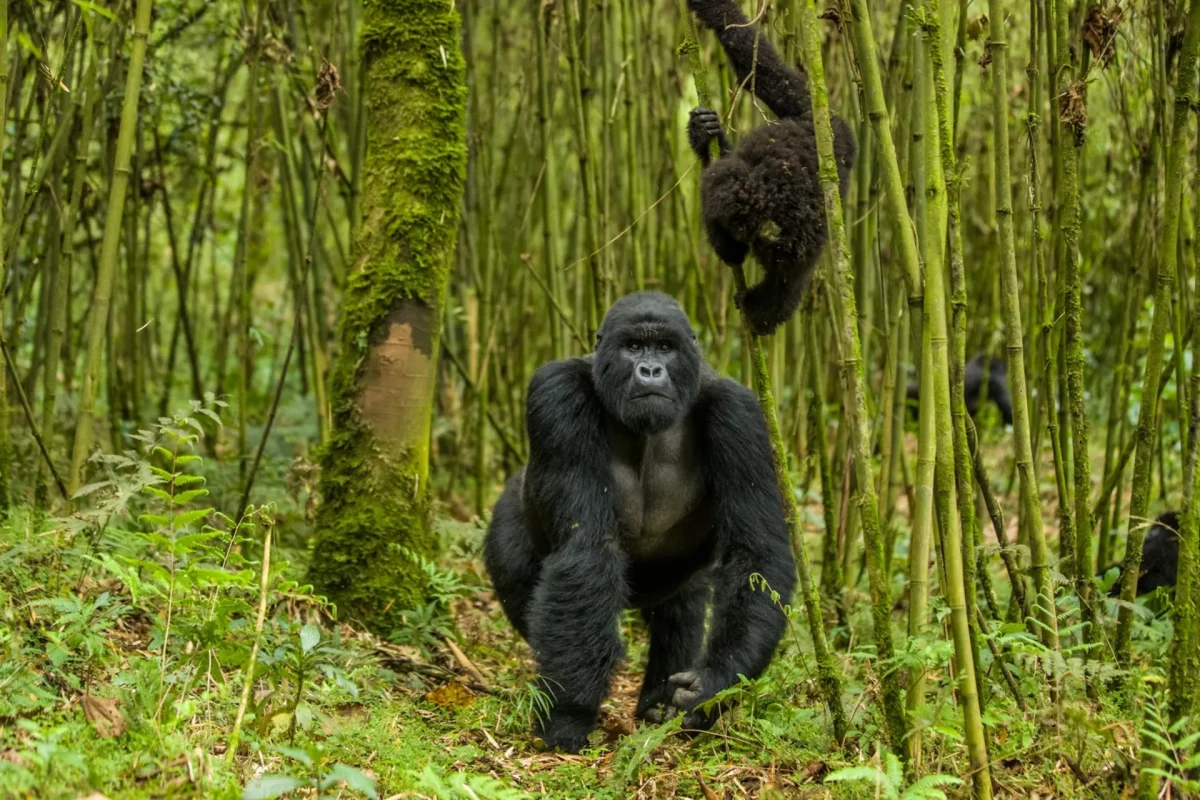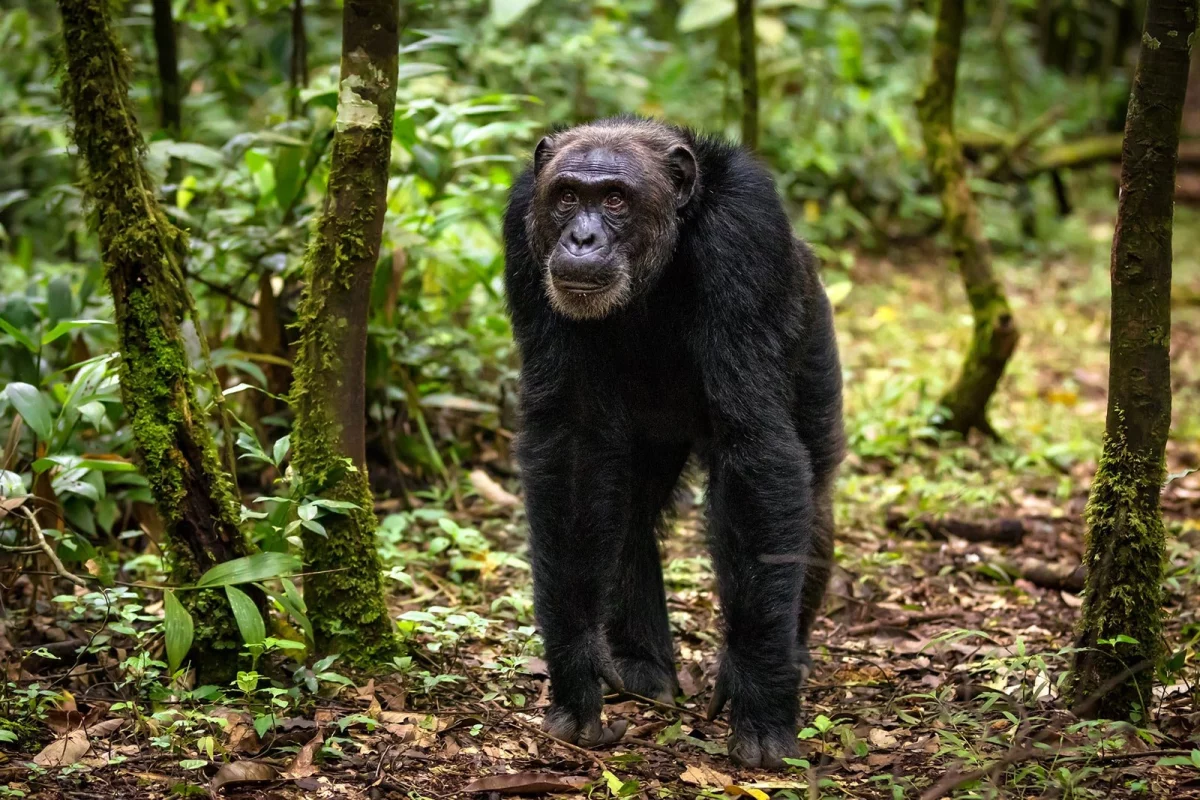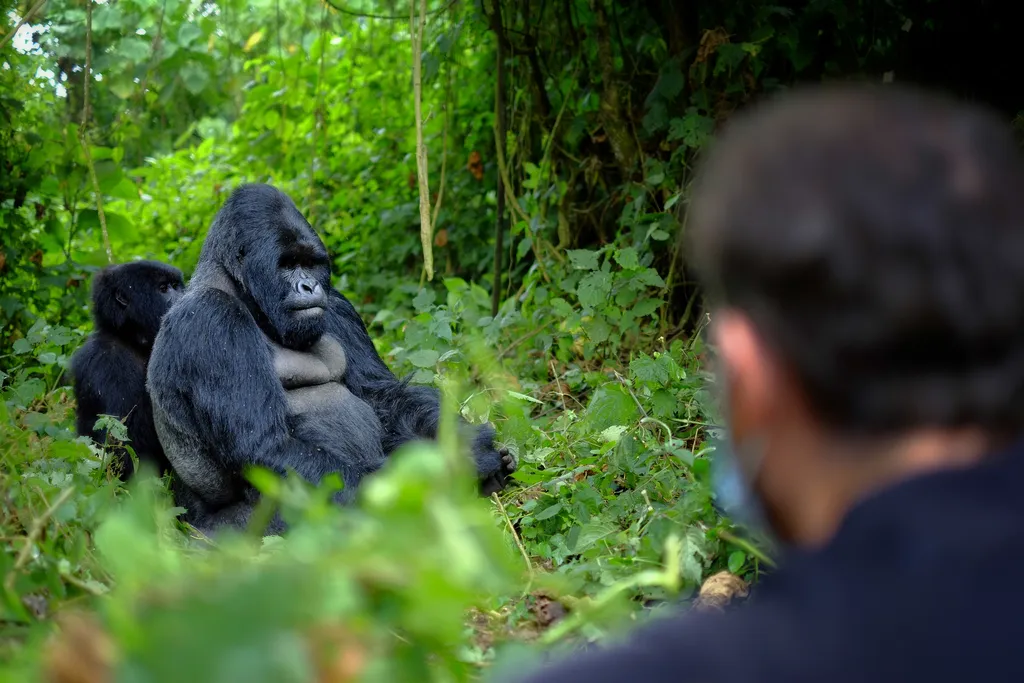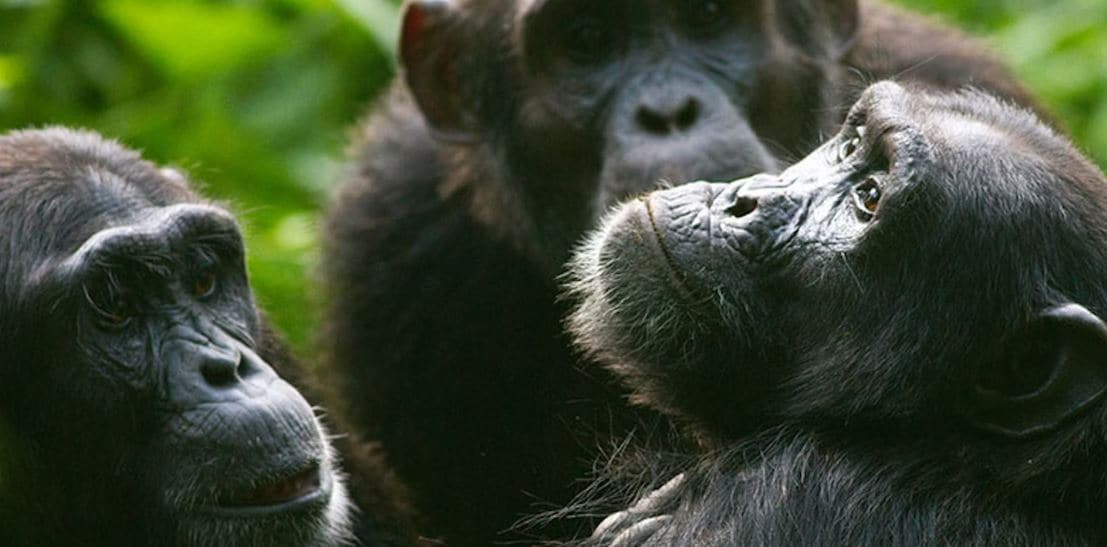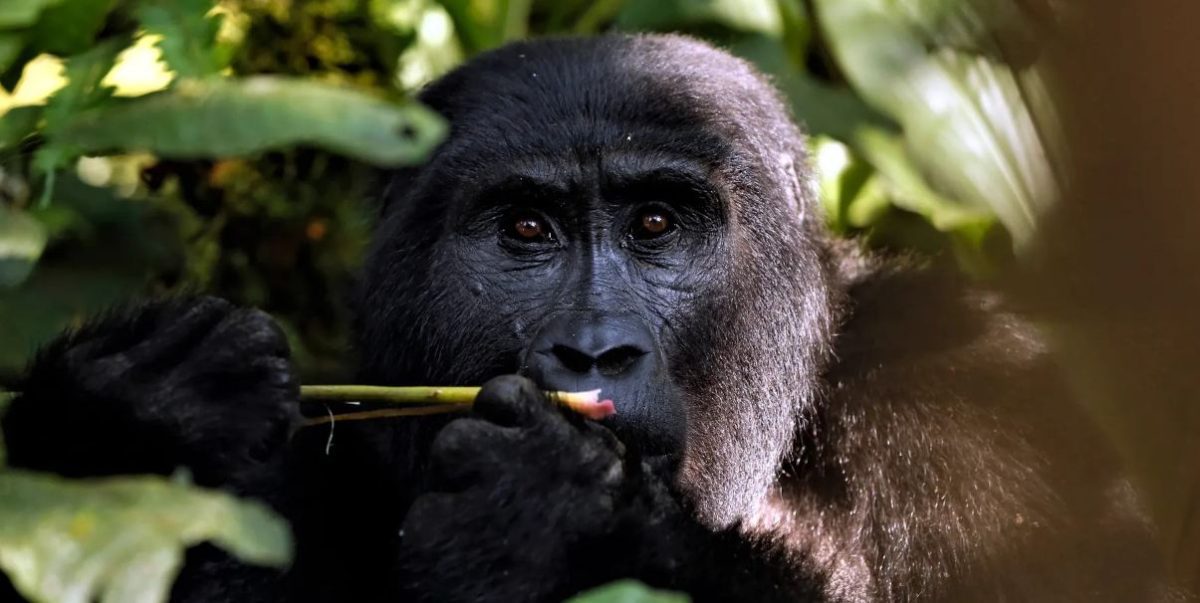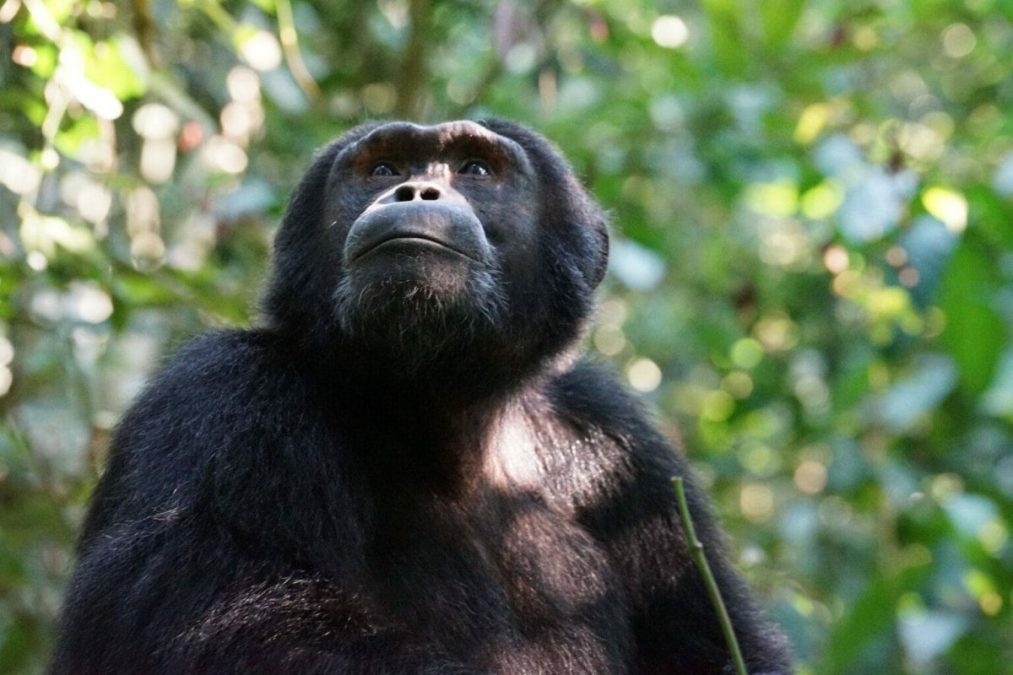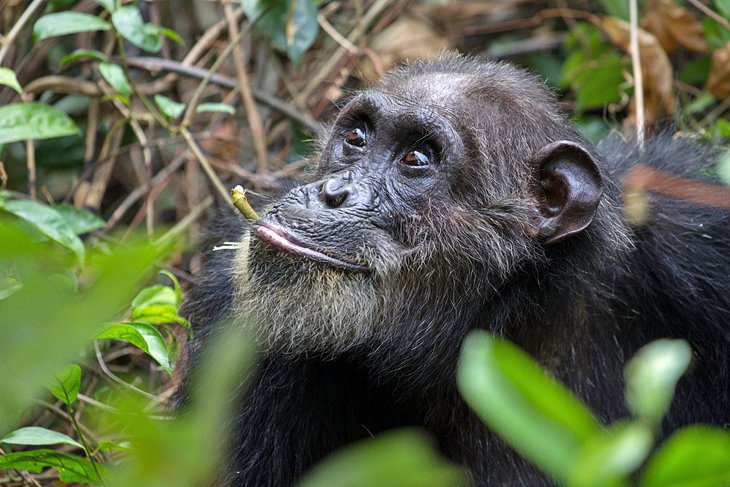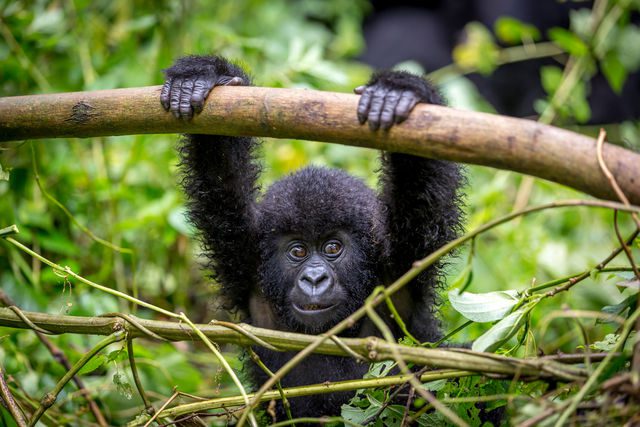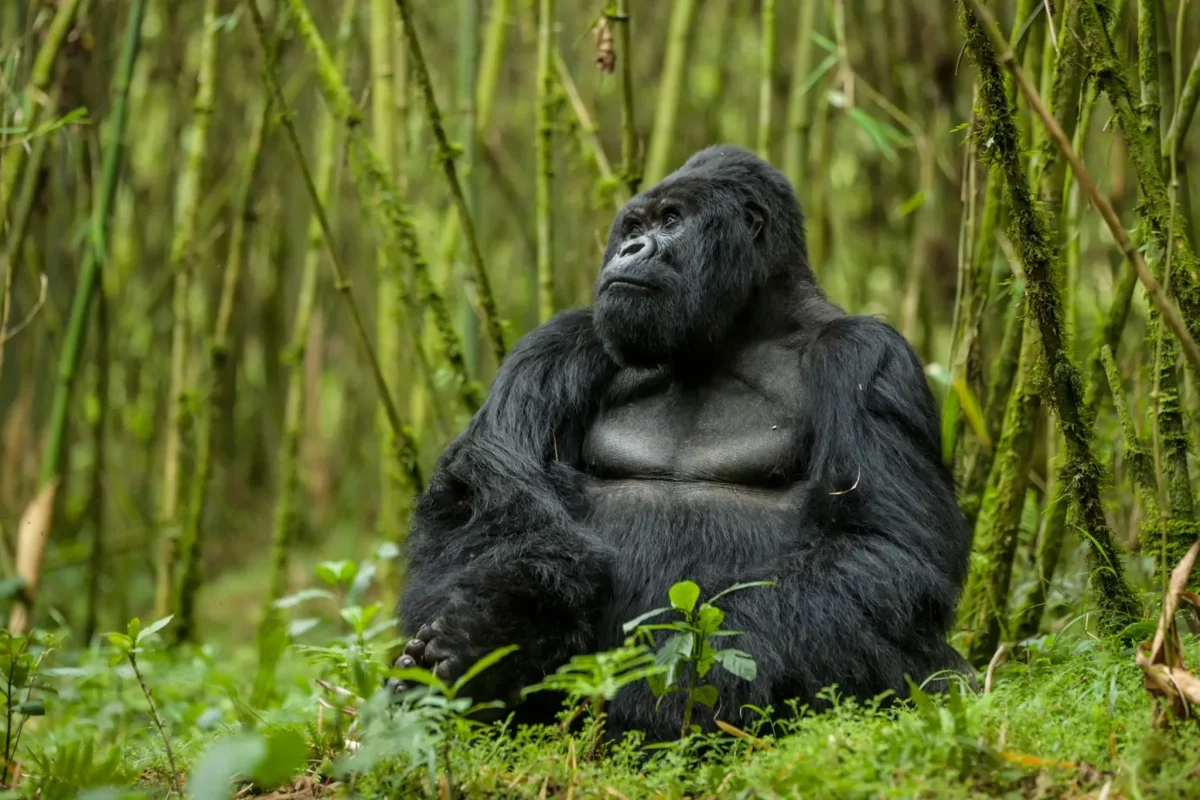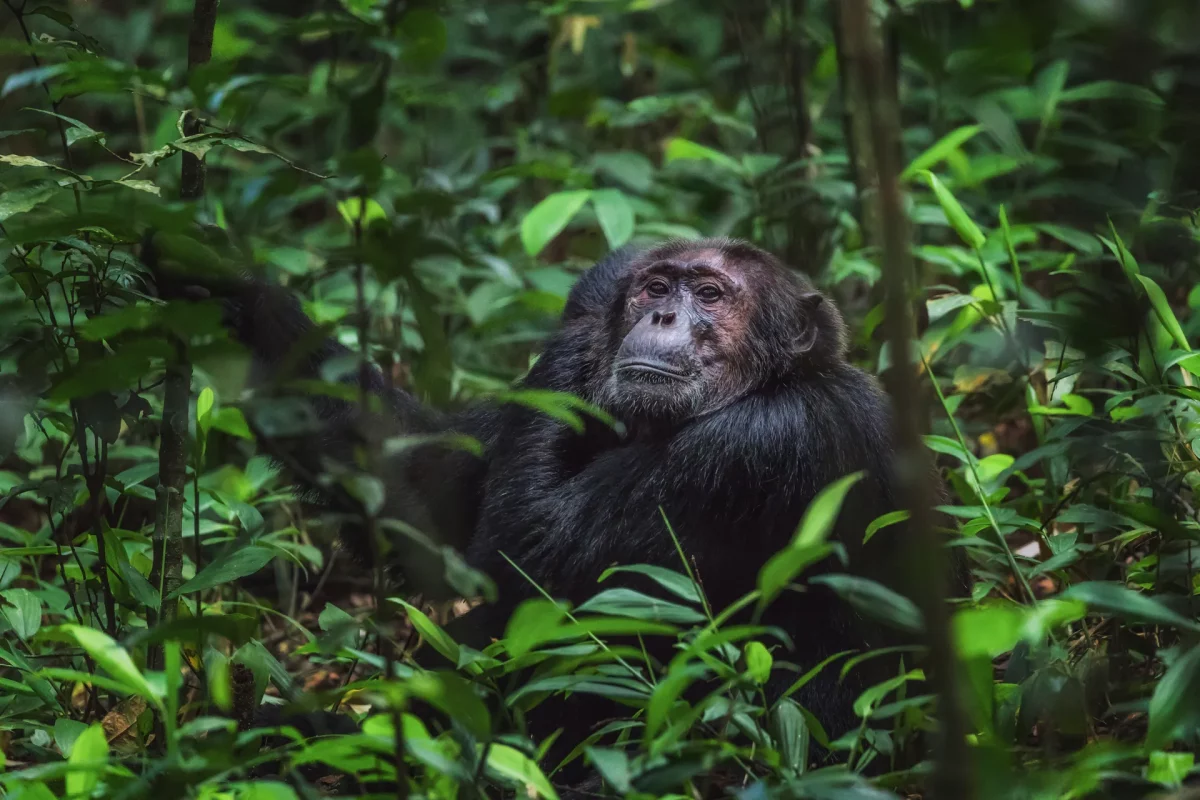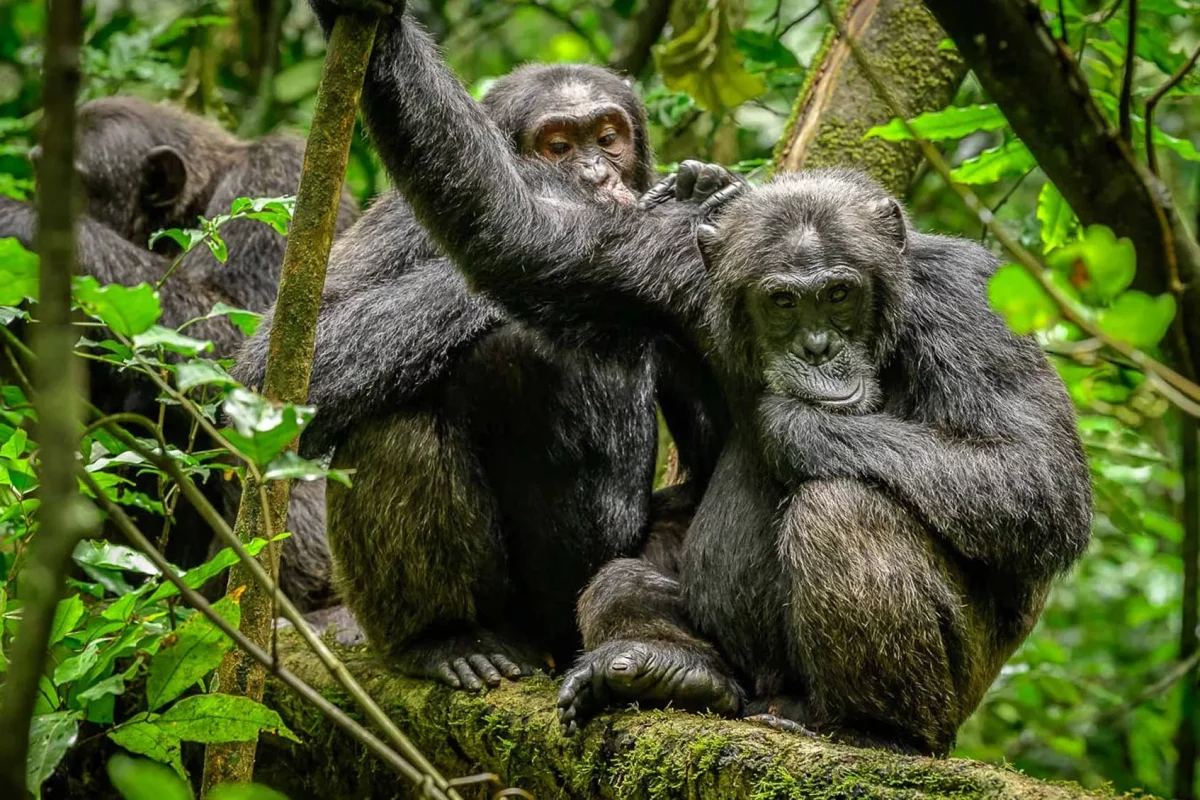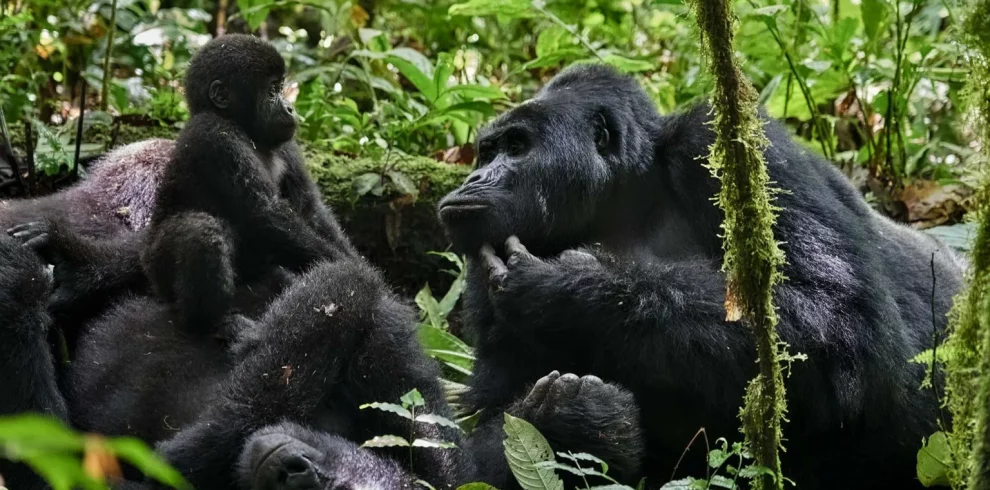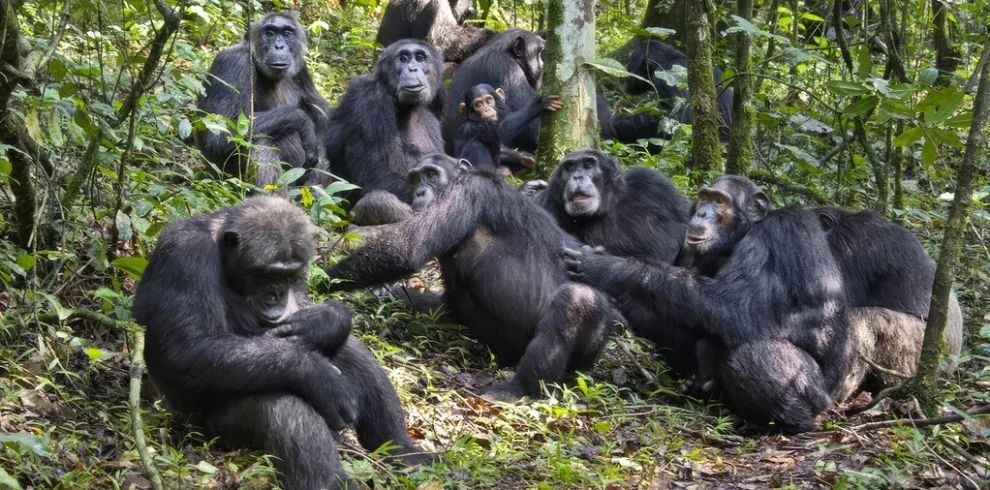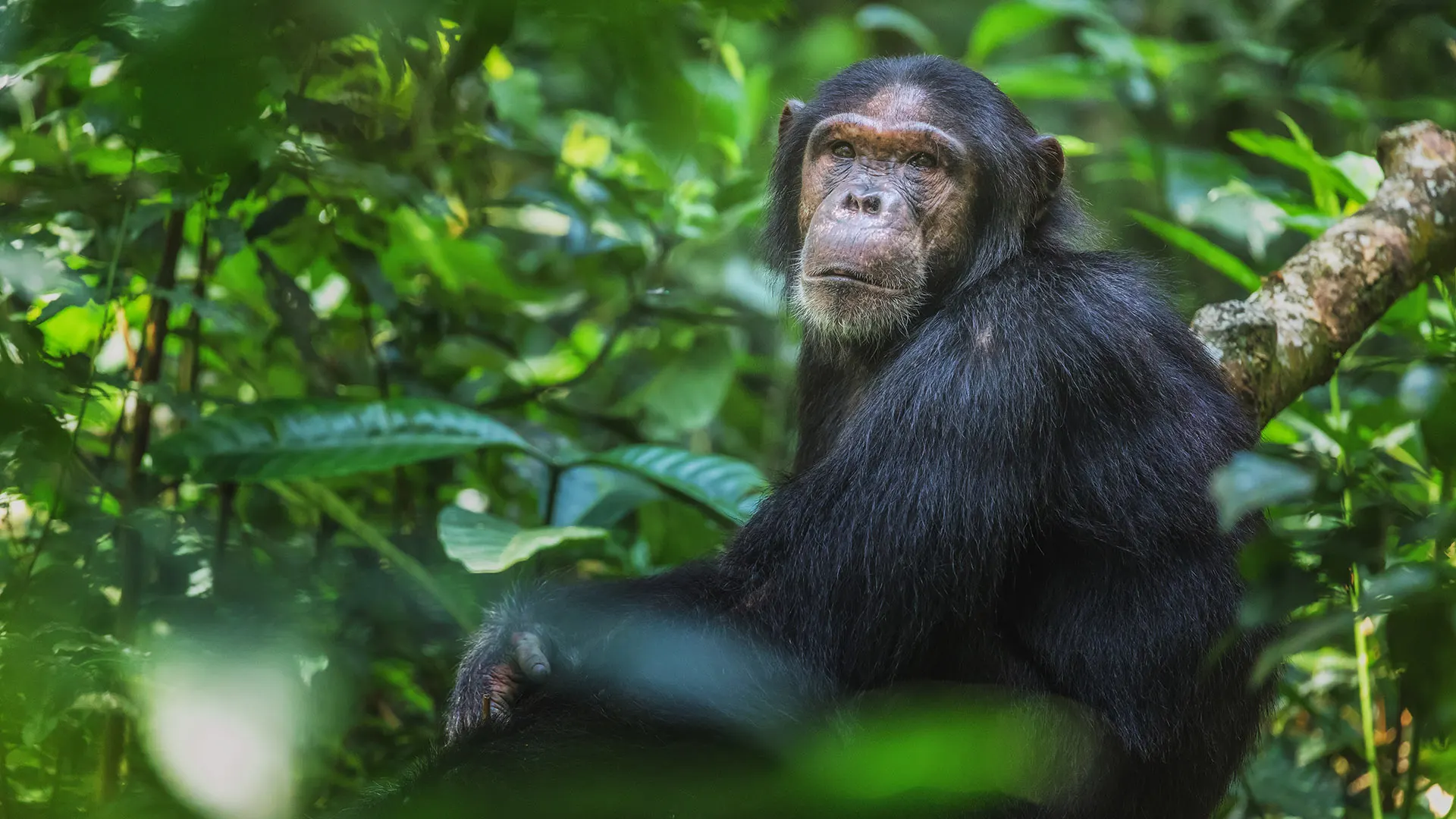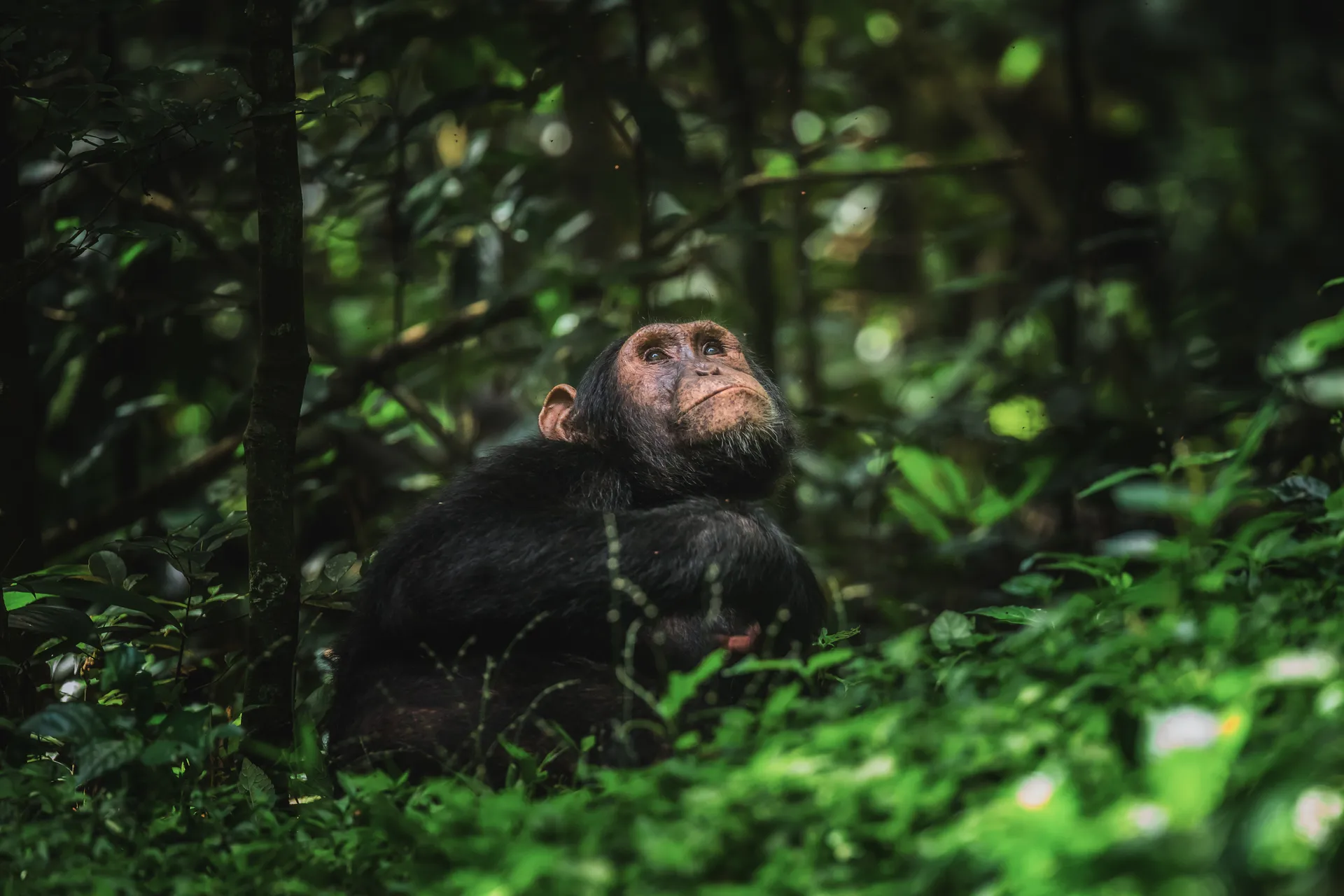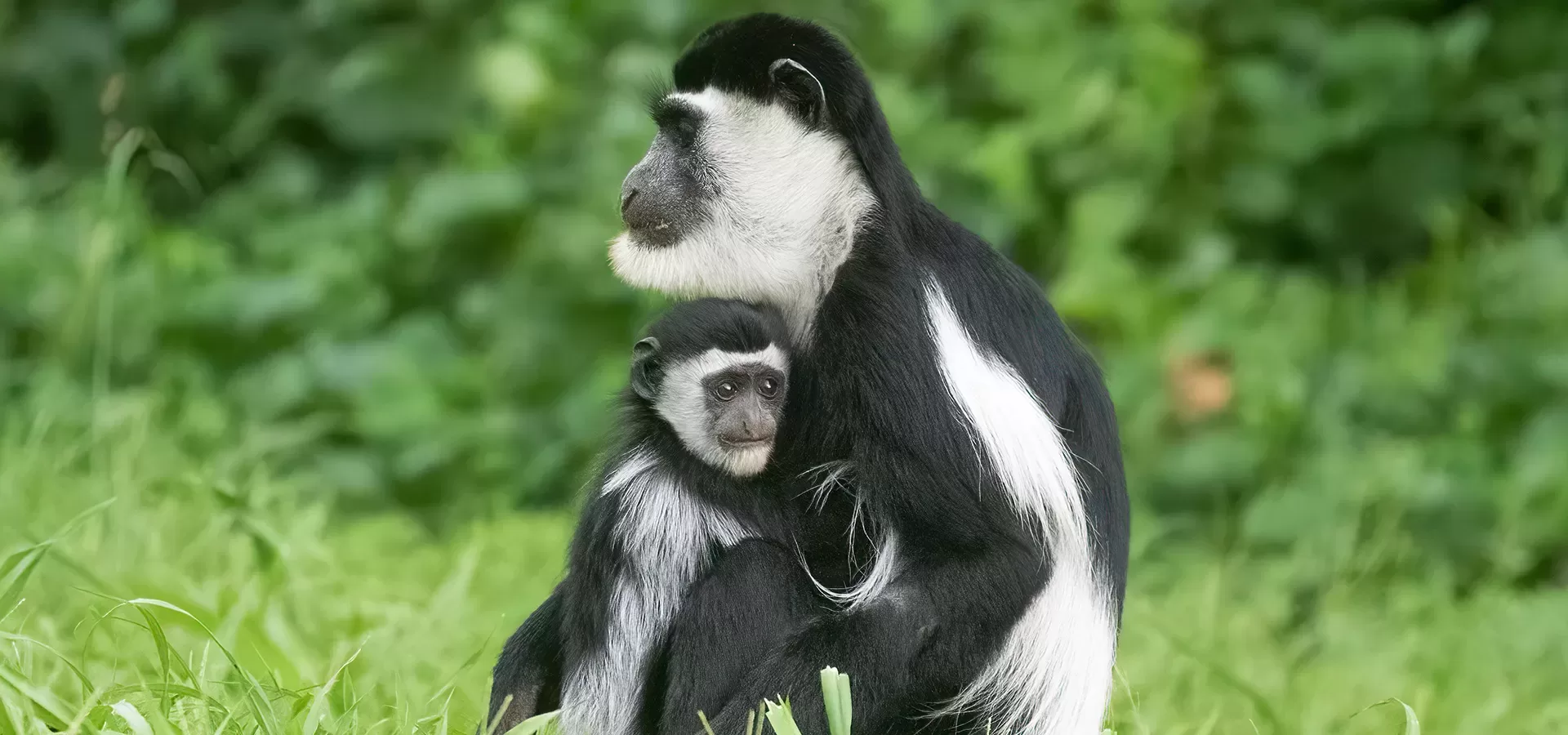Table of Contents
ToggleGorilla vs chimpanzee: How often do you mistake a gorilla for a chimpanzee or vice versa? I am sure we have all made this mistake once or twice.
While they are both great apes, gorillas and chimpanzees are different from each other with distinct differences. Gorillas are larger in size than the chimpanzees, usually three times larger.
Adult male gorillas (known as Silverbacks), unlike chimps, have coarse dark hair that becomes silver as they age, but chimpanzees do not.
You can also differentiate between a chimp and a gorilla by looking at their ears.
Gorillas have small ears near the rear of their skull, but chimps have large ears on the sides of their heads, similar to humans. In this article, we’ll address the following many differences between gorilla and chimpanzee:
- Classification
- Build and body size
- Ears
- Habitat
- Social behavior
- Diet and feeding
- Communication
- Strength
- Aggressiveness
- Intelligence
- Lifespan
- Conservation status
Difference Between Gorilla And Chimpanzee
1. Gorilla vs Chimpanzee: Classification
Gorillas belong to the genus Gorilla. There are two species: the Western Gorilla and the Eastern Gorilla. Each gorilla species contains two further sub-species.
The Eastern Gorilla species consists of Mountain Gorillas and the Eastern Lowland Gorillas whereas the Western gorilla species consists of the Cross River Gorillas and Western Lowland Gorilla. The most famous gorilla subspecies are the mountain gorillas which only live in the forested highlands of three African countries: Rwanda, Uganda and DR Congo.
Chimpanzees belong to the genus Pan. There are two species: the Common Chimpanzee (Pan Troglodytes) and the Bonobo (Pan paniscus).
2. Gorilla vs chimpanzee: Build and Size
Another major difference between gorilla and chimpanzee is their build. Gorillas are the largest living primates on Earth. They are significantly larger and heavier than chimpanzees.
These strong gentle giants are can reach up to 1.8 metres (6 feet) in height and weigh up to 270 kilograms, and arm spans up to 2.6 metres. This makes them so overwhelming to be around during your Uganda gorilla safari or a gorilla tour in Rwanda.
Chimpanzees on the other hand can weigh up 70 kg with a standing height of up to 4 ft. Gorillas have a robust build with a broad chest and shoulders. They have a large head and prominent bony crests on the top and back of their skulls, giving their heads a more conical shape.
Chimpanzees, on the other hand, have a more slender build. Chimps lack the prominent sagittal crest and associated head and neck musculature of gorillas. In comparison to the wide shoulders of the ordinary gorilla, the average chimpanzee is significantly slimmer.
3. Gorilla vs chimpanzee: Ears
You can also tell the difference between a chimpanzee and a gorilla based on their ears. Getting up close to these African Great Apes means you can really appreciate their amazing features
Chimpanzees have large ears on the sides of their head, much like humans do, while gorillas have small ears located toward the back of their skull. A wildlife safari in Uganda is the perfect opportunity to practice your gorilla vs chimpanzee identification techniques.
From around $1950 per person sharing, primate enthusiasts can enjoy a budget Uganda safari to Kibale National Park and Bwindi Impenetrable Forest. Chimpanzee and gorillas are easily sighted on a 4-Day Safari that is perfect for travelers with limited time and budget.
Spot the difference between Gorilla and Chimpanzee
Are you ready to test your skills? Take a quick look at the below images to see if you can spot the difference between these two African Great Apes.
4. Gorilla vs chimpanzee: Habitat
Another key difference between gorilla and chimpanzee has to do with their habitat. Gorillas are mainly ground-dwelling apes and only inhabit the tropical forests of equatorial Africa.
Although their range covers a small percentage of Africa, gorillas cover a wide range of elevations. The mountain gorilla inhabits the Albertine Rift montane cloud forests of the Virunga Volcanoes and Bwindi, ranging in altitude from 2,200 to 4,300 m.
Lowland gorillas live in dense forests and lowland swamps as low as sea level, with western lowland gorillas living in Central West Africa and eastern lowland gorillas living in Congo (DRC). The chimp is a highly adaptable species. It lives in many habitats, including dry savanna, evergreen rainforest, montane forest, swamp forest, and dry woodland-savanna mosaic.
Chimps spend more time high up in trees compared to gorillas and that can make viewing during your Uganda chimpanzee trekking safari more difficult.
However, the guides at Kibale National Park work really hard to ensure that you get a good sighting and a few good photo opportunities. Expert guide, like those accompanying the guides on our 10 days Uganda safari, will always remind you to keep an eye on the trees.
5. Gorilla vs chimpanzee: Social Behavior
In addition to their physical characteristics and habitats, gorillas and chimpanzees have unique social and behavioral patterns. Gorillas live in tight-knit family units of usually 5 to 10 individuals, but sometimes 2 or more than 50.
A family of these magnificent creatures is led by one adult male or silverback, with a harem of multiple adult females and their offsprings. A silverback is typically more than 12 years of age and is named for the distinctive patch of silver hair on his back, which comes with maturity.
Chimpanzees live in complex social structures. They form communities of up to 150 individuals and live in a strict male-dominated hierarchy. Whereas a family of gorillas always stays together, chimpanzee communities are more fluid.
They often break up into sub groups, which spend time apart to reunite later. There always seems to be something going on in a chimp community: an alpha male trying to take over, a youngster throwing a tantrum, males patrolling their territory and, occasionally, a hunt.
Although this makes chimp watching very rewarding, it also makes it trickier than spending time with gorillas. When on the move, chimps are difficult to follow; their nimble bodies move easily through the vegetation whereas we struggle to get through.
6. Gorilla vs chimpanzee: Diet and Feeding
Both chimpanzees and gorillas are omnivores, but their diets differ.
Around 85% of gorilla diet is made up of leaves, shoots and stems, but gorillas can also eat larvae, snails, ants, roots, barks and rotting wood (a good source of sodium/salt). Read more about what do gorillas eat.
Though Chimpanzees generally prefer fruits and plants, they have a varied diet that also includes insects, eggs, nuts, and hundreds of other things.
They relish meat, and have been known to hunt, kill and eat monkeys, small antelopes, and even tortoises, which they slam against trees to break open their shells.
The opportunity to witness chimpanzees hunting monkeys is a once-in-a-lifetime experience, as the forest explodes into shrieks of terror and the excited howls of the hunting chimps.
7. Gorilla vs chimpanzee: Communication
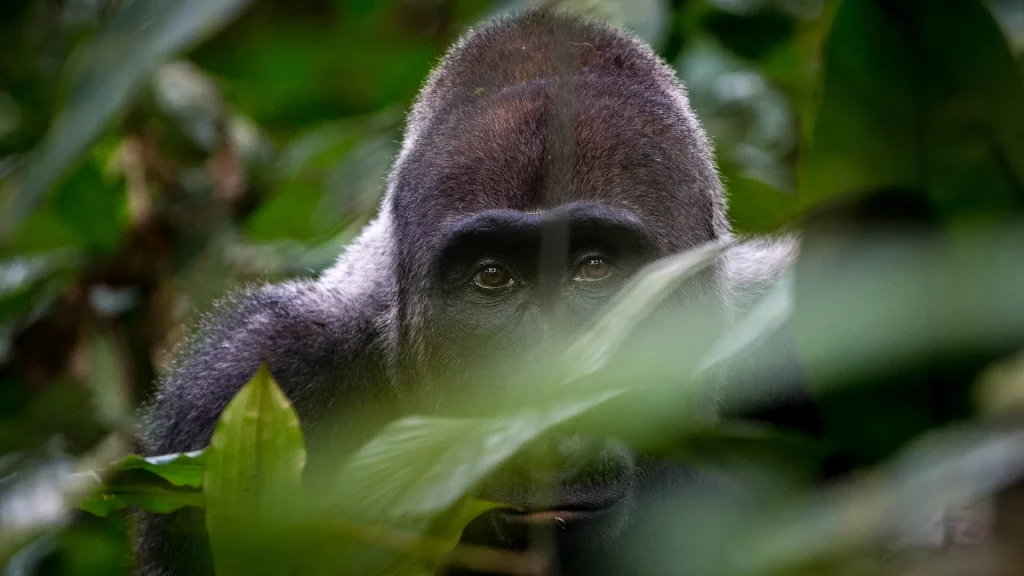
Gorillas communicate through vocalizations, body language, and facial expressions. They use chest beating and vocalizations for various purposes. 25 distinct gorilla vocalizations are recognized. Many of them are used mainly for family communication within dense vegetation.
Sounds such as grunts and barks are heard often while traveling, and indicate the whereabouts of individual family members. Deep, rumbling belches implies contentment and are heard often during resting and feeding time.
Gorillas often beat their chests when they perceive a danger or threat. When the chest beatings happen, it implies that the gorilla is charging at a human or any rival.
Chimps use facial expressions, postures, and sounds to communicate with each other. When frightened, a “full closed grin” causes nearby individuals to be fearful too.
Playful chimps display an open-mouthed grin. When it is in a mode of aggression, a chimp can swaggers bipedally as it waves its arms in an attempt to exaggerate its size.
While travelling, chimpanzees keep in contact by beating their hands against the trunks of large trees, an act that is known as “drumming”.
Vocalizations are also vital in chimp communication. The most common call in adults chimps is the “pant-hoot”, which often signals social rank and bond along with keeping groups together.
Chimps pant-hoots mainly consists of four parts. It begins with soft “hoos”, the introduction. It then gets louder and louder, the build-up. It climaxes into screams and sometimes barks. These die down back to soft “hoos” during the letdown phase as the call ends.
8. Gorilla Vs Chimpanzee: Strength
Because of their massive size, the gorillas are far stronger than chimpanzees. An average gorilla is approximately 4-6 times stronger than a chimpanzee.
Read more about Silverback gorilla strength. Chimpanzees are also very strong – several sources say they are many times stronger than a man but this is debatable. Their advantage over humans is rather their large amount of fast-twitch muscle fibers.
9. Aggressiveness
In terms of aggressiveness, this is where the chimp comes into its own.
As noted above chimpanzees often hunt other animals for food, engage in organised assaults against other chimps and generally exhibit more violent tendencies than the average gorilla.
Silverback males might fight each other and males might engage in dominance displays, but otherwise gorillas are more peaceful and docile in nature.
If attacked by chimps, however, the gorilla will surely fight back.
10. Gorilla Vs Chimpanzee: Intelligence
Both gorillas and chimpanzees are intelligent animals but when you compare the IQ of Gorillas vs Chimpanzees, chimpanzees beat gorillas hands down when it comes to intelligence.
When you visit them during one of the primate safaris, your mind will be blown by their extraordinary intelligence owing to the fact that they are more closely related to humans as well as bigger brains compared to their body weight.
11. Chimpanzee vs Gorilla: Lifespan
A gorilla‘s lifespan is normally between 35 and 40 years, although zoo gorillas may live for 50 years or more. Colo, a female western gorilla at the Columbus Zoo and Aquarium, was the oldest known gorilla at 60 years of age when she died on 17 January 2017.
The average lifespan of a chimpanzee in the wild is relatively short, usually less than 15 years, although individuals that reach 12 years may live an additional 15 years.
On rare occasions, wild chimpanzees may live nearly 60 years. Captive chimpanzees tend to live longer than most wild ones, with median lifespans of 31.7 years for males and 38.7 years for females. The oldest known male captive chimpanzee to have been documented lived to 66 years, and the oldest female, Little Mama, was over 70 years old.
12. Chimp vs Gorilla: Conservation Status
Chimpanzees are highly endangered. As of 2023, between 170,000 and 300,000 chimps are believed to exist in the wild, a decrease from over 1,000,000 chimpanzees in the early 1900s! Their populations are rapidly declining due to habitat loss, poaching, and disease.
All subspecies of gorilla are listed as endangered or critically endangered.
About 316,000 western lowland gorillas are thought to exist in the wild, 4,000 in zoos, thanks to conservation; eastern lowland gorillas have a population of fewer than 5,000 in the wild and 24 in zoos. Mountain gorillas are the most severely endangered, with an estimated population of around 1063 left in the wild and none in zoos.

